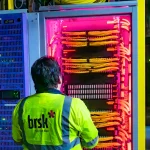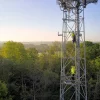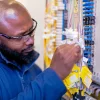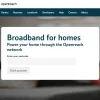Connexin Calls on UK Gov to Recognise LPWAN as Critical Infrastructure

Fixed wireless operator and broadband ISP Connexin has today called on the UK government to expand its focus beyond full fibre and 5G mobile by recognising Low Power Wide Area Networks (LPWAN / LoRaWAN), which are often used to help connect small IoT style sensors and meters, as “critical infrastructure“.
Connexin, which is also involved in its own roll-out FTTP broadband technologies, is separately a member of the LoRa Alliance (LoRo = Long Range), a membership organisation where industry experts collaborate and share experiences to promote and drive the success of LoRaWAN wireless networks. As part of that they recently launched the “Liberté, Egalité, Connectivity: LPWAN for All” movement to help encourage the UK gov to recognise LPWAN as critical infrastructure.
Sites or networks designated as Critical National Infrastructure (CNI) are those facilities, systems, sites, information, people, networks and processes, necessary for a country to function and upon which daily life depends. It also includes some functions, sites and organisations which are not critical to the maintenance of essential services, but which need protection due to the potential danger to the public (e.g. civil nuclear and chemical sites).
Advertisement
In short, being part of CNI would afford such networks greater protection, much like the energy supply, water supply, transportation, health and other telecoms networks.
Jason Legget, Lead for Connexin’s Public Sector & Enterprise IoT Solutions, said:
“We’re looking to work with UK partners and businesses who see LPWAN as a vital part of their operations. We want to create solutions for customers that build evidence of LPWAN’s benefits and drive confidence in it as a solution. We also want to bring together consortiums by working together with the LoRa Alliance to agree on the right policy message to deliver to our new Government.”
Connexin’s viewpoint here is that if governments continue to only talk about 5G and FTTP as the answer for all our connectivity needs, then “deployment and adoption of IoT solutions will continue to be frustrated” (i.e. commercial investment will slow and the benefits such as innovative new service models and important operational efficiencies will not be realised at a pace that is needed). It perhaps doesn’t help that wireless LPWAN networks have always been more in the background and don’t grab the same sort of headlines, despite having plenty of uses and growing in popularity for IoT connectivity.
Mark is a professional technology writer, IT consultant and computer engineer from Dorset (England), he also founded ISPreview in 1999 and enjoys analysing the latest telecoms and broadband developments. Find me on X (Twitter), Mastodon, Facebook, BlueSky, Threads.net and Linkedin.
UK ISP Origin Broadband Trials Taking on New Customers Again »





















































Is anyone using their LoRa network for anything crucial, that can’t fallback to anything else to recognise it as critical?
I understand that electricity meters in Scotland and the north of England use LoRaWAN for connectivity as opposed to 2G in the south.
Coincidentally timed article on BBC News today. https://www.bbc.co.uk/news/articles/cq52382zd1no
Got a junk mail in the post a couple of months ago asking if [company] could rent space on our roof to install a LoRaWAN gateway. My understanding is that the forthcoming smart water meters use it too.
Connexin have been quire successful with LoRaWAN and large scale water meter rollouts with utility companies.
Connecting water meters isn’t just about efficient meter reading. It allows water companies to really understand how water is being used in near real time which helps them manage the water. It helps them identify where leaks are at a very granular level.
Connected Water meters need to have a very long battery life (for obvious reasons), and nothing beats LoRaWAN in this regard.
The reason they want to get it ‘classified’ as critical infrastructure is so they can use code powers to deploy poles to install their gateways on.
I am guessing Anglian Water is not the one they supply because I very often see AW guys uncovering manhole in front of my home to scan the value.
There’ll be poles for broadband, poles for mobile, poles for electric meter reading, gas, water, traffic monitoring…
The list is endless and the number of multiple companies doing this will be endless